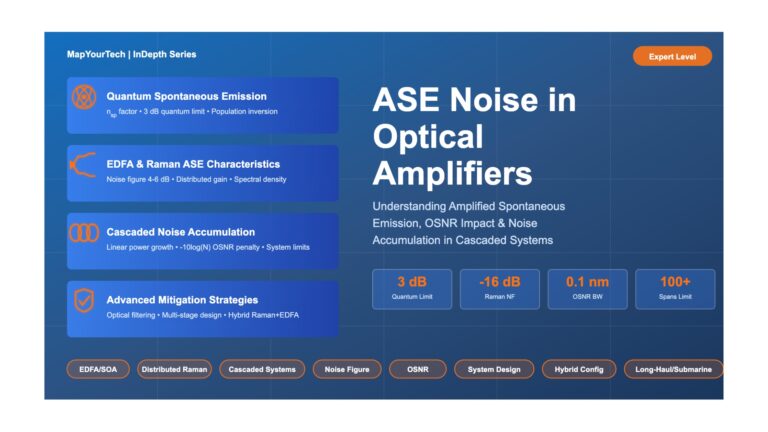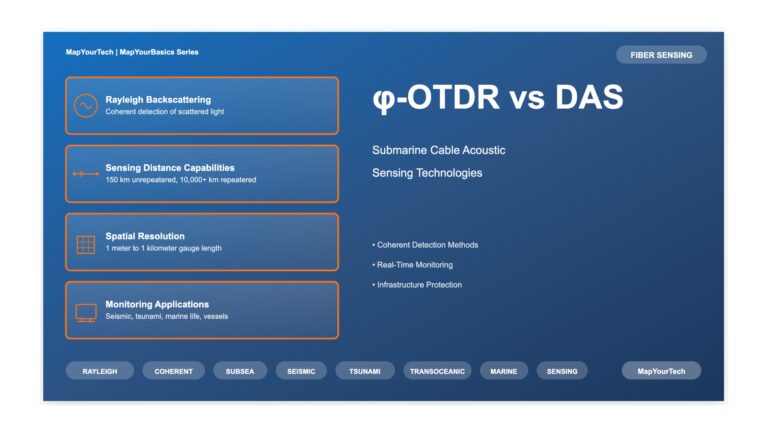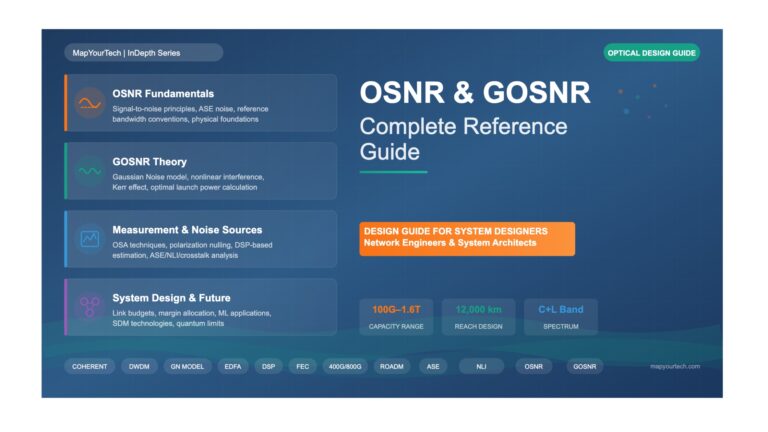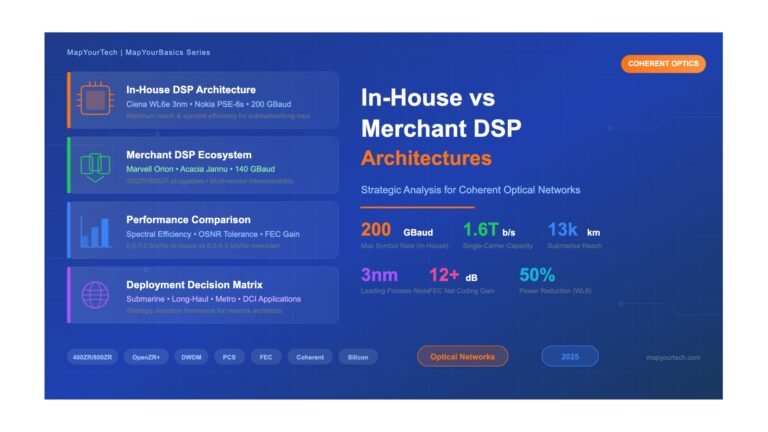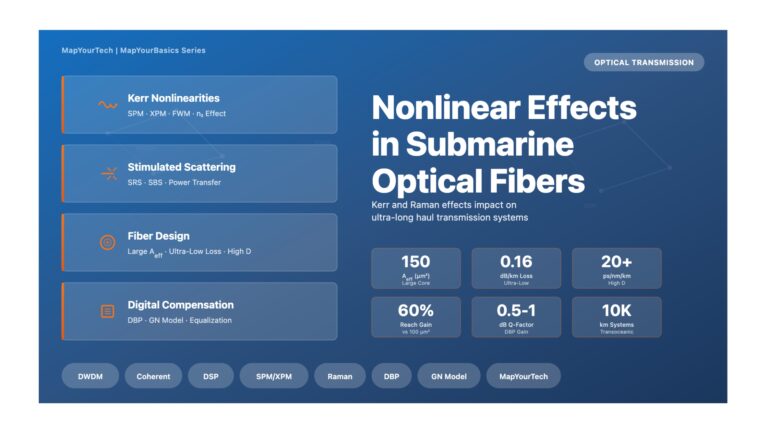Technical
Showing 11 - 20 of 573 results
SDM Deployment Roadmap: From Lab to Commercial Systems | Advanced Deep Dive SDM Deployment Roadmap: From Lab to Commercial Systems...
-
Free
-
December 21, 2025
SMART Cable Architecture: Sensors, Repeaters, and Data Links – Complete Visual Guide SMART Cable Architecture:Sensors, Repeaters, and Data Links A...
-
Free
-
December 21, 2025
Earthquake Early Warning System Architecture: A Visual Technical Guide | MapYourTech Earthquake Early Warning System Architecture Transforming Submarine Fiber Optic...
-
Free
-
December 20, 2025
Advanced Deep Dive: SDM Fiber Types – MCF, FMF, and Hollow-Core Comparison | MapYourTech Advanced Deep Dive: SDM Fiber Types...
-
Free
-
December 20, 2025
ASE Noise in Optical Amplifiers: Understanding Amplified Spontaneous Emission, OSNR Impact, and Cascaded Amplifier Noise Accumulation – Expert Deep Dive...
-
Free
-
December 20, 2025
φ-OTDR vs DAS: Submarine Cable Acoustic Sensing Fiber Optic Sensing φ-OTDR vs DAS: Submarine Cable Acoustic Sensing Comparing Distributed Sensing...
-
Free
-
December 19, 2025
Reliability Engineering for Subsea Cable Systems Reliability Engineering for Subsea Cable Systems Submarine Communications | Network Engineering Introduction Subsea cable...
-
Free
-
December 19, 2025
OSNR and GOSNR Complete Reference Guide – Fundamentals OSNR and GOSNR Fundamentals of Optical Signal-to-Noise Ratio 1.1 Introduction to OSNR...
-
Free
-
December 12, 2025
In-House vs Merchant DSP Architectures in Coherent Optical Networks | MapYourTech In-House vs Merchant DSP Architectures in Coherent Optical Networks...
-
Free
-
December 10, 2025
Nonlinear Effects in Submarine Optical Fibers Optical Transmission Nonlinear Effects in Submarine Optical Fibers Understanding Kerr and Raman nonlinearities and...
-
Free
-
December 7, 2025
Explore Articles
Filter Articles
ResetExplore Courses
Tags
automation
ber
Chromatic Dispersion
coherent optical transmission
Data transmission
DWDM
edfa
EDFAs
Erbium-Doped Fiber Amplifiers
fec
Fiber optics
Fiber optic technology
Forward Error Correction
Latency
modulation
network automation
network management
Network performance
noise figure
optical
optical amplifiers
optical automation
Optical communication
Optical fiber
Optical network
optical network automation
optical networking
Optical networks
Optical performance
Optical signal-to-noise ratio
Optical transport network
OSNR
OTN
Q-factor
Raman Amplifier
SDH
Signal amplification
Signal integrity
Signal quality
Slider
submarine
submarine communication
submarine optical networking
Telecommunications
Ticker





